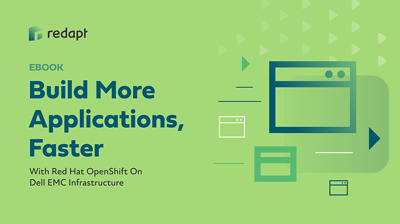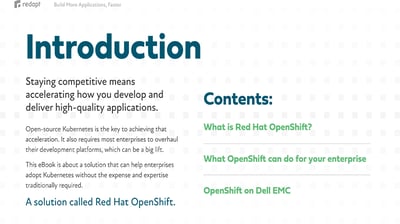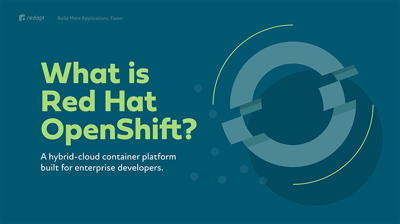Red Hat’s enterprise-ready Kubernetes platform, OpenShift, has been designed to provide companies with the speed and power of cloud-based development on premises and in the cloud.
This hybrid cloud solution offers enterprises a suite of tools for adopting Kubernetes, regardless of where development takes place.
In other words, OpenShift delivers all the flexibility of application development in the cloud without the need to always be in the cloud.
Built to enhance Kubernetes
The very foundation of Red Hat’s platform is Kubernetes, and what makes OpenShift special is how it’s designed to build on that foundation. It includes the following tools:
- Prometheus and operation lifecycle management
- CI/CD pipelines and an embedded container registry
- Support from Red Hat’s world-class engineering team
Download Now: Build More Applications, Faster
Each of these and other included tools work in concert with Kubernetes to bring flexibility to an enterprise.
With OpenShift, you can remove dependencies that slow down development, prevent downtime by moving deployment to incremental releases, and reduce latency via the automated scaling of resources during peak times.
Built to make adoption of Kubernetes easier
Adopting traditional Kubernetes usually requires enterprises to assemble and integrate a dozen additional pieces to their development platforms.
The additional expense, along with ongoing investment and the on-hand experience needed to get up and running, often inhibits enterprises from taking the leap.
OpenShift, in contrast, is compatible wherever an enterprise runs infrastructure, allowing developers to use the same software stacks and automation tools they’re used to.
This drastically cuts down on the need for investment and training and frees up resources for developers to put the Kubernetes environment to work developing and deploying new products.
Built to work well with Dell EMC hardware
Red Hat has worked with Dell to develop tech stacks that help enterprises quickly start leveraging Kubernetes.
These tech stacks include:
- Application stacks on-demand so you can utilize the languages and tools you want and deploy through container images.
- Simplified deployment via a simple click of a button or git push command.
- Support for multiple environments—on premises, the cloud, hybrid—along with automated release management.
For the full story on how OpenShift can help your enterprise, download our free eBook Build More Applications, Faster. Alternatively, click here to read our complete guide to enterprise DevOps.


















